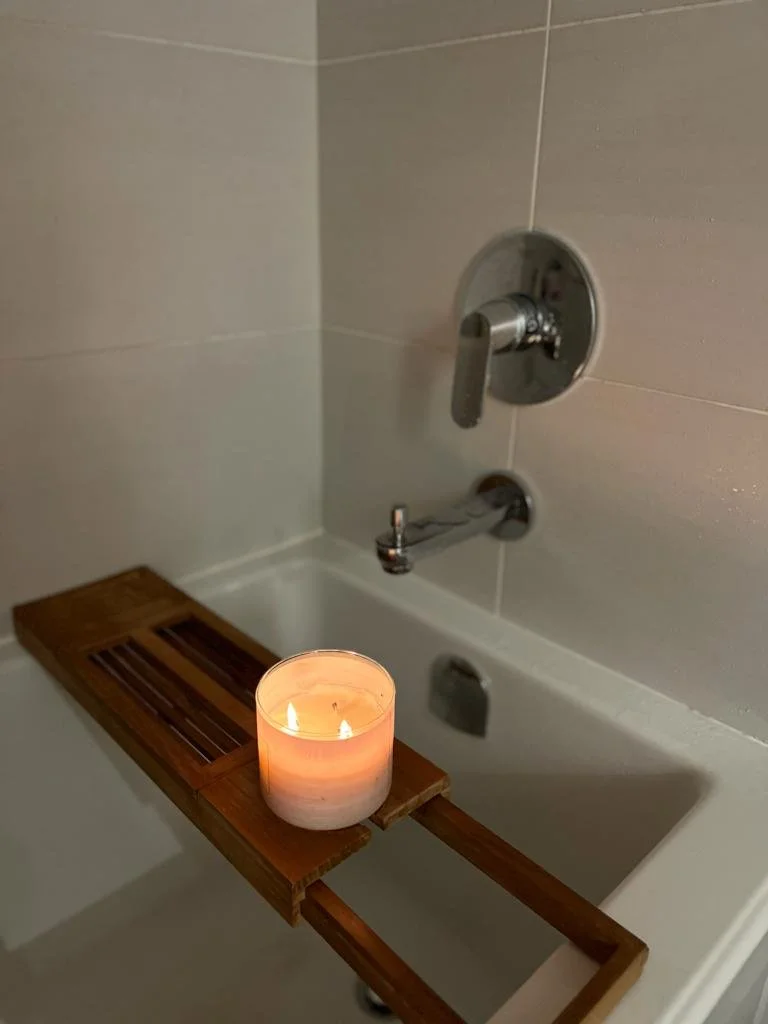Winter 2023 Journal: To Rest and Restore with Water
As we move through this late winter season, anticipating warmer spring days ahead, we still find ourselves navigating cold, dark and damp days. This is when we need to keep our inner fire burning, exploring ways to support a healthy rhythm of heat, relaxation, and calm. In this journal, I share a method I rely on all year, but more so through the winter and seasonal transitions, to maintain a continuum of meditation, rest, recovery, and restoration. This healing routine is facilitated by warmth, water, breath and stillness to support my brain, nervous system, heart, lungs, muscles, and deep tissues, thereby nurturing all 4 Elements of my Training and Health.
The Effects of Chronic Stress
Research shows that stress is the common risk factor associated with up to 90% of diseases. Whether it’s an uncontrollable stress like the loss of a loved one, or chosen stresses that come with the demands of your job, stress can impact your mind and body to deep levels.
Research shows that people who have lived many years under levels of accumulated or chronic stress can suffer from depression, hormonal imbalances, dysfunctional breathing and weakened immune systems. Stress can also lower bone density in women, leading to osteoporosis.
Fight or Flight
When we experience stress, our sympathetic nervous system produces our “fight or flight” response, triggering physical reactions such as increased heart rate, blood pressure, body temperature and cortisol in the blood stream. Cortisol is a hormone secreted by the adrenal glands in response to stress, and it’s long lasting. Stress disrupts sleep and digestion. It can generate inflammation, pain, injuries, headaches and fatigue along with decreased tissue repair and fertility. However, when we remove or manage the stress by tending to our parasympathetic nervous systems, we allow the mind and body to relax and calm, leading to a state of “rest and digest.” We can improve or even eliminate the symptoms mentioned above.
Chilling Out in a Hot Bath
The key to calming this overactive, stressful condition is to allow time and space for cortisol to decrease in the blood and guide you to a more restful state. I wrote about the healing benefits of cold water in my Spring 2022 Journal. Now I want to discuss the benefits of submerging yourself in warm water, while practising a controlled and slower rhythm of breathing, meditation, stillness and calm. It’s one of the best practises I’ve found to achieve this state of peace and restoration, and it can support all elements of your health. You don’t need a long bath. With even a short period of rest in warm water, taking a moment to pause and breathe, you remove yourself from noise and distractions. You create a space for healing.
Slipping into a warm bath can feel like an enveloping hug. In some ways it’s comparable to the environment where we began life, safe, warm and comforted, in the womb. It’s a cost-effective and simple tool with many physical, mental, emotional, and social benefits that all support management of stress, anxiety, overexertion, and fatigue.
The Benefits
A bath is a meditative practise with the comfort and warmth of water around you. You close your eyes and navigate a check-in with your body top to bottom. Allow for at least five minutes of breathing, pure rest, and stillness. Like every practise, it takes time to feel and live the benefits, but allow yourself the opportunity to step away from the noise, stresses, anxieties, and responsibilities for just a few minutes. Your mind and body will rest. Your brain, heart and lungs will restore.
I know baths can be difficult for some, as they require blocks of quiet time, remaining still and calm, lying in one spot. Being one who has experienced an overtaxed nervous system, along with anxiety and stress, and who has been overactive, I used to spend maybe five minutes in a bath. I simply couldn’t remain still, and I found it difficult to make this a priority. However, with years of consistent practice, I now can spend from thirty minutes up to an hour. I assure you if you implement this exercise 1-2 times a week, and learn the practise, you will notice improved sleep, greater physical and mental recovery, emotional regulation and a deep connection to your breath and your body. Look upon your bath as an exercise, the same as how you commit to your workouts, walks, jogs or whatever you choose to stay active and healthy.
You may not see this as a social experience, but the benefits come when you are more present and at ease, relaxed and rejuvenated from this practise. You will show up and engage differently in the world and in your relationships. Through the practise of stillness and breath, the relationship with yourself becomes deeper, more connected and your mind and body become one.
Miranda

